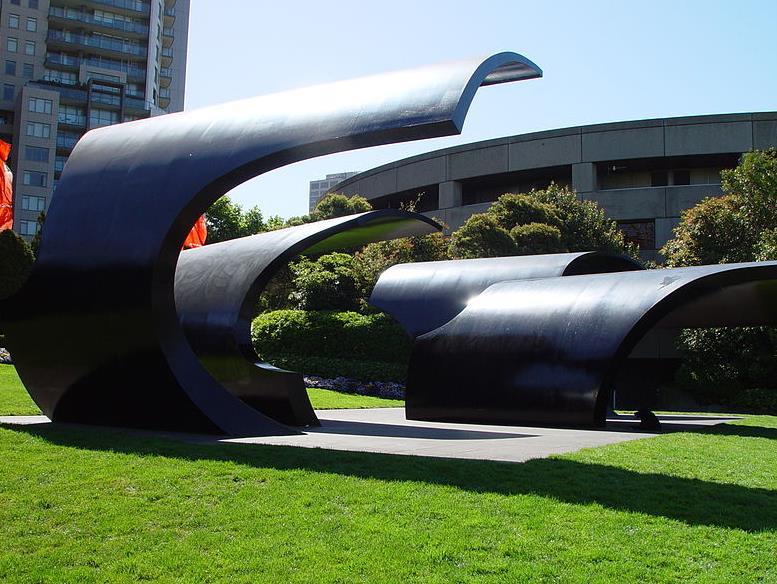Inge King, Forward Surge (1976)
Spread across three levels of The Ian Potter Centre, NGV Australia, the current Inge King survey exhibition, Constellation, takes the viewer on a fascinating journey through the creative life of one of Australia’s pioneering abstract sculptors. Curated by David Hurlston, the exhibition consists of around a hundred works; a mixture of finished sculptural pieces, preparatory maquettes, as well as prints and paintings by her late husband, Grahame King, an integral player in King’s success as an artist.
Like stars that form the points of a constellation, a pattern starts to emerge in King’s artistic journey spanning close to seven decades. Now 98, King has put down her welder’s torch although continues her creative practice. Arriving in Australia in 1951 with her Australian-born husband and fellow artist, painter and printmaker Grahame King, Inge was inspired by the ‘unruly’ Australian landscape. Moving to Warrandyte, then a rural outer suburb of Melbourne, the Kings lived, worked and raised their family in a house designed by the modernist architect, Robin Boyd.
The exhibition is grouped into periods; her recent works on the lower levels, moving to earlier pieces on the third floor. Trained as a sculptor in Europe, King’s sculptural beginnings were in formal modeling. Head, (1944), oak and Flower dancer, (1948), sandstone on a wood base are examples of her earlier formalist works in which the mediums have been carefully carved or chiseled; reduced from figurative to abstract forms with surfaces reduced to planes and angles finely rendered.
During this early phase, King also made jewellery, brooches, rings, necklaces usually in silver, as a form of supplementing the family income: this incubation stage of the 1950s and early 1960s was to lead to her later ‘assemblages’ that became King’s sculptural language.
King’s works first surfaced in the public consciousness with some of her larger scale sculptures such as Forward Surge; a series of huge rolling waves of painted black steel, forever suspended at their crests. A number of maquette variations are part of the exhibition. Forward Surge, second version (1973-4), Geelong Gallery, Victoria was the final model produced for the public work that now sits between the Arts Centre and Hamer Hall, St Kilda Road Melbourne.
The second floor of the NGV exhibition represents the period which was a turning point for King’s work. Textured, heavily welded metal assemblages such as Winged image, second version (1964) and Captive (1965) occupy this space. They represent a time King was not only grappling with the medium of steel and welding but with the aesthetic of the Australian landscape which was to become her muse. It was after returning from a trip to Europe in 1969-70 that her minimal forms with refined surface treatment evolved, along with her commitment to larger scale works.
Sculpture is an art form that requires viewing ‘in the round.’ Its maker must consider not only multiple viewing angles but the way the work can successfully interact with the space around it. It is King’s later works that most successfully achieve this. Celestial rings, (2012) made from stainless steel or Rings with orange, (2009), enamel paint on steel not only reflect the notion of heavenly bodies as the title of the exhibition suggests but a sense of completeness. For an artist in her ‘twilight years’ one feels that her lens is no longer purely earthward bound.
A finely conceived exhibition by a fine Australian artist.
Rating: 4 ½ out of 5 stars
Inge King: Constellation
NGV Australia, St Kilda Roadwww.ngv.vic.gov.au
1 May-31 August





